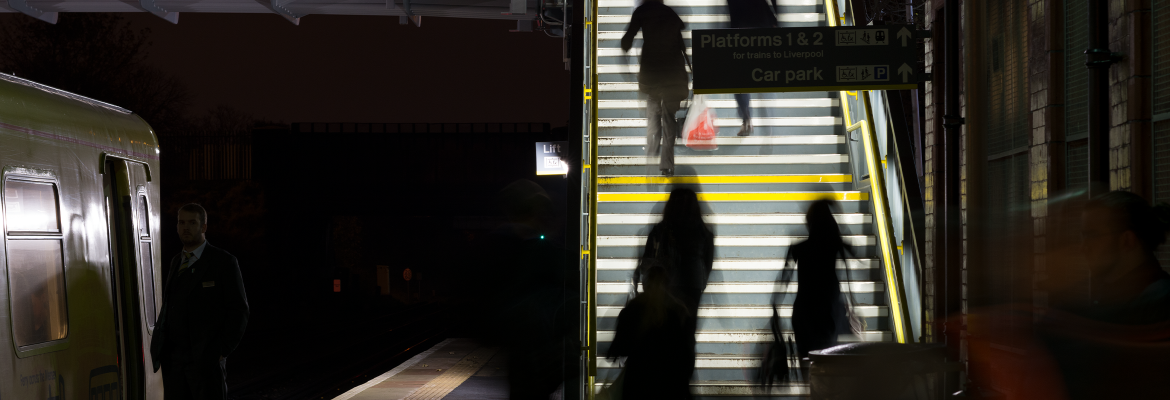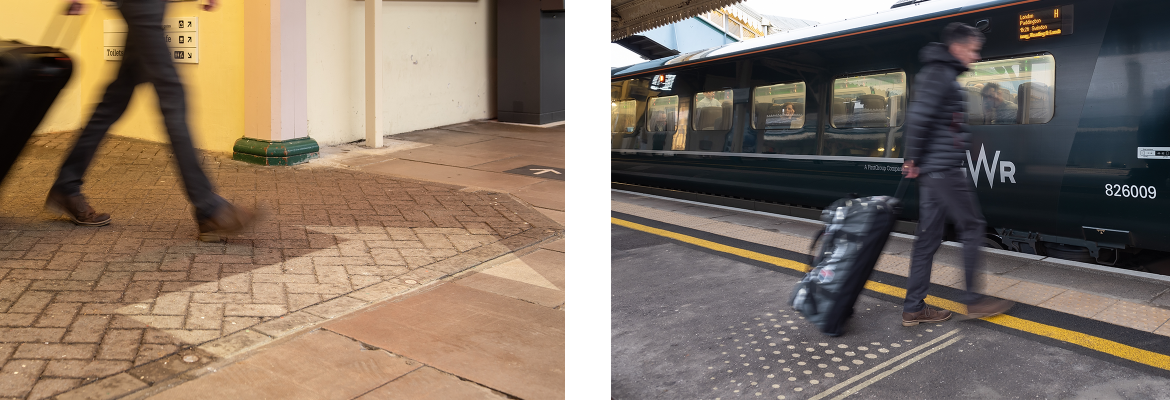The Role of Lighting in Station Wayfinding
October 2022, by David Woodcock
DW Windsor operates internationally. For the best experience in your region, please select the region most applicable to you.
October 2022, by David Woodcock
KNOWLEDGE
Intelligent lighting solutions and smart controls can help enhance the passenger experience, improve safety and even help to ensure a train station operates as smoothly as possible. Here, David Woodcock, our Business Unit Manager – Rail, looks at how this can be achieved.
The movement and behaviour of passengers around a train station can significantly impact how the station operates, especially at busy times. Overcrowding in certain areas of the station platform can slow passengers getting on and off the train, increasing dwell times as a result. Also, people not using the stairs correctly or moving too quickly can result in slips and trips.
The COVID-19 pandemic dramatically impacted passenger numbers in Great Britain, with the levels dropping 92% in early 2020 compared to the same period in 2019 – the lowest since the mid-19th century. As a result, previously important issues such as overcrowding became less of a pressing concern.
However, passenger numbers are now steadily returning to normal, with the latest figures showing there were 285 million passenger journeys in the three months up to the end of 2021. Therefore, it is important to consider again how stations can be improved to deal with peak passenger numbers.
|
|
|
David Woodcock, Rail Business Unit Manager Originally trained as an electrical engineer, David has over 25 years of experience within the lighting industry and has previously worked at DW Windsor in a number of key roles. As Rail Business Unit Manager, he helps to provide lighting and control-based solutions within the transportation sector. |

Lighting can play an important role in guiding behaviour and supporting the instructions given by signage and station staff. For example, lights can be dynamically projected onto the station platform to indicate where to stand to avoid people disembarking from the arriving train. This supports announcements and signage directing people to stand clear with an easy-to-understand guide of where passengers should position themselves. This means a more efficient movement of people on and off the train, leading to a better experience and shorter train dwell times.
This use of lighting was part of the solution implemented at Chippenham Station in Wiltshire, where a consortium consisting of DW Windsor, the Department for Transport, InnovateUK, FirstGroup, The University of Nottingham and the RSSB, embarked on a trial of how intelligent lighting solutions could alleviate the issues. The results showed that people did interact with the projected light to position themselves correctly on the platform.

Similarly, lighting can be used on staircases to direct people to walk on the correct side and even influence the pace of walking to improve safety. Installing a green light at the top of a staircase on the left and a red light on the right subtly influences people to walk down on the left and up on the right. This was also introduced as part of the Chippenham Station project and was used alongside pulsing handrail lighting to indicate the direction and set the pace on the stairs. The study's results also indicated that the lighting encouraged the use of the handrail, further improving safety.
Lighting can also be used in other ways to assist with wayfinding, such as projecting arrows or simple directions onto the ground to make it clear where people should go when entering the station or disembarking from a train. This could be guiding people to the lifts or stairs or showing them how to exit.
Adaptable lighting
Finally, intelligent and dynamic lighting for wayfinding has a number of benefits over traditional signage. Firstly, it is more intuitive, so the meaning does not need to be processed consciously, as with written signage. This not only makes reactions quicker but also means it can influence the behaviour of people who are distracted. For example, the red light at the top right-hand side of a staircase may be seen in the person’s peripheral vision and allow them to react. A written sign in the same position could go unnoticed. Furthermore, replacing some wayfinding signage with lighting can help declutter stations, making the remaining signage clearer and helping passengers to navigate more easily visually.
The added advantage of dynamic lighting is that it can be changed to suit different situations in a way that traditional signage cannot. For example, redirect people along an alternative route if required.
With passenger numbers quickly returning to pre-pandemic levels, carefully designed lighting has significant potential to improve wayfinding throughout stations, but especially on train platforms. Lighting can support and sometimes replace conventional signage to help streamline passenger movement, improve safety and enhance the overall experience.